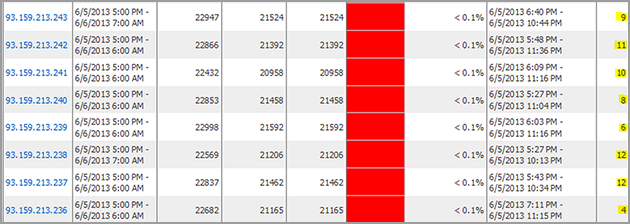
Many users ask us this question. This post will serve as clarification and explanation of this concept. A spamtrap literally means a trap for spammers, but we will see a more technical definition, according to Microsoft:
Microsoft, for example, is one of the ISPs which actively create spamtraps to detect senders trying to spam their users. Let’s see a practical example.
Microsoft may create a portal or use any page of an existing website to add besides the contact page another email address, it can be a mailto or be added directly in the form code. This other address was logically, not registered to receive any newsletter, however spammers will send messages to these addresses, because they use email extraction softwares for collecting email addresses on websites.
When someone sends a newsletter to this address, Microsoft already knows that the sender is not sending to databases 100% opt-in, and this user will be penalized. As these are what we could call very bad spamtraps, due to the fact that they confirm that the sender is violating the first and perhaps most important rule for the detection of spammers, a company may only send emails to users who have registered to receive their newsletters, when a sender violates this rule, he will be blacklisted as a spammer.
There are other spamtraps that are not as problematic or which will affect less the sender score reputation, but a spamtrap will always have consequences to the sender. These addresses are used to detect violation of other rules.
For example, if you have in your database a legitimate email from a Hotmail user who deleted his account, for six months the server will bounce the message with a hard bounce error, to indicate that you should not send emails to this address again.
After six months, Microsoft may reactivate the account as a spamtrap. In this case, the sender is violating another rule, you should not send more emails to hard bounces.
Another example, as in the previous case, a Hotmail user decides to delete the email account. However, in this case, the server may continue to receive emails on the account without any bounce message, but without interacting with the sender in any way. After three months the email will be converted into a spamtrap to detect spammers who are working with inactive contacts, as you should only send emails to subscribers who interacted with you in the last quarter.

How to detect spamtraps?
With dedicated IPs, Microsoft feedback tools such as SNDS can tell us whether a campaign has spamtraps and how many:

But of course this tool will not indicate which emails are spamtraps, as by definition, the spamtraps should be secret.
So there is no way of knowing which emails are spamtraps. Some companies advertise that they have reverse engineered systems which can try to locate these addresses, but although technically it could Be possible, it is a flagrant violation of the terms of use of all ISPs and is easily detectable, therefore the domains and IPs could end up been blocked forever.
However, you can locate, without violating the rules, emails free of spamtraps on your database, excluding the affected addresses. you can contact our Customer Service department for more information.

Why do I have spamtraps if the database is opt-in?
The answer to this question is usually that at some point, the company acquired third-party databases. Often these companies don’t have the necessary care and the databases are not 100% opt-in.
Although it is not recommended to work with purchased databases, if you are working with serious leads, the company should guarantee that the leads are double opt-in and the databases are updated and the old, disabled and inactive emails where deleted.
In another post you can find some tips to check the quality of your data base.
Another plausible reason that can explain why your database has spamtraps is the fact that many users work with old addresses and make reactivation campaigns, trying to send campaigns, this could be a good strategy in some cases, but you have to work hard to make sure you are only working with active subscribers.
